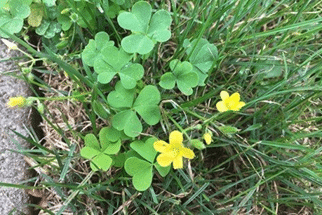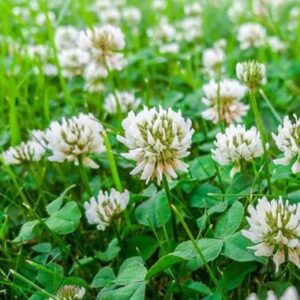Scientific Name: Oxalis stricta L.
Description:
This species is found in high and low maintenance turf, in sunny and shaded areas, and in moist and dry soils. Yellow woodsorrel tends to grow in an upright manner and exists as individual plants or small patches in turf. It is frequently found near flower beds and along sidewalks and is most noticeable when flowering during summer.
Life Cycle:
Yellow woodsorrel is a member of the Oxalidaceae family and is classified as both an annual and perennial. Plants have taproots and rhizomes that produce new plants at nodes. This species produces yellow flowers, seed capsules, and seeds from late spring to early fall. Seeds germinate during spring and give rise to new plants.
Identification:
Yellow woodsorrel plants grow close to the ground as first, then produce upright, branching green stems with leaves and flowers. Light green or reddish-green leaves with long petioles are arranged alternately on stems and have three heart-shaped leaflets. Individual leaflets are smooth and approximately ¼ to ½ inch in diameter. Leaves droop and fold at night, then expand in daylight. Groups of small yellow flowers, ¼ to ½ inch in diameter, arise from leaf axils. Individual flowers have five yellow petals that are rounded and often notched at tips. Flowers are eventually replaced by elongated cylindrical seed capsules that range from 1/3 to 3/4 inch in length. When mature, capsules split and eject seeds into the air, often landing several feet from the capsule.
Cultural Control:
Infestations of yellow woodsorrel can be reduced by improving turf density through fertilization, regular mowing, and use of turfgrasses well-adapted to site conditions. This weed can be controlled with various postemergence herbicides, particularly those containing combinations of 2,4-D, dicamba, MCPP, and/or fluroxypyr; as well as herbicides containing triclopyr. Some preemergence herbicides will control yellow woodsorrel from seed but have no effect on plants emerging from rhizomes.






